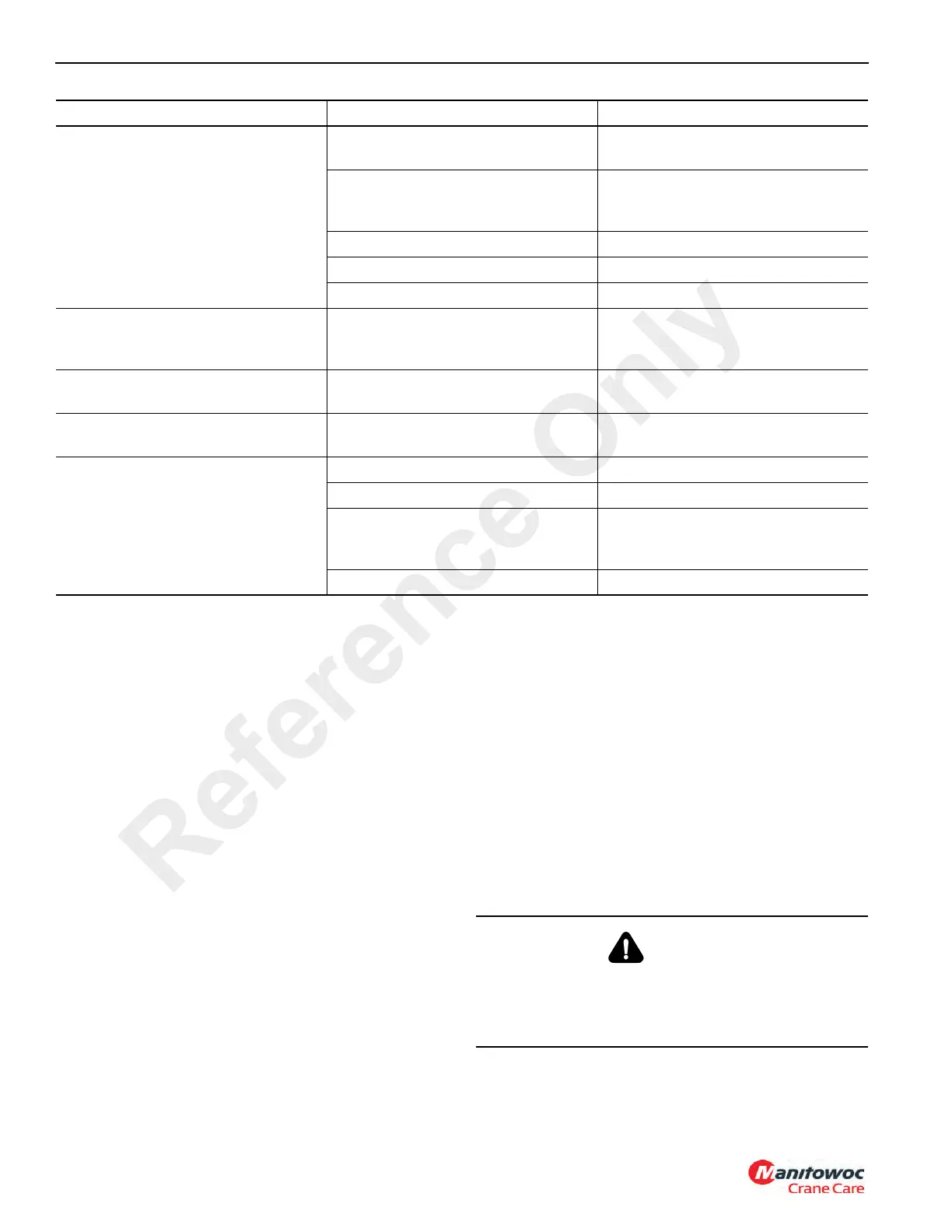UNDERCARRIAGE RT530E-2 SERVICE MANUAL
8-28 Published 4-22-15, Control # 556-00
Outrigger Beam
Description
The outrigger beam assembly (Figure 8-20) consists of an
outrigger beam, a jack cylinder, an extension cylinder, an
Outrigger Monitoring System (OMS) (Optional—Standard in
North America), string potentiometer, and the required hoses
and mounting hardware.
Theory of Operation
When the outrigger extension is activated, it extends or
retracts the outrigger beam within the outrigger box. The
outrigger beam can be extended to the mid-extend position
by allowing the lock pin to ride on the top of the beam while
it’s extending. The lock pin will automatically drop into the
hole when the beam reaches the mid-extend position.
The stabilizer cylinder is mounted to the end of the beam and
applies force to the outrigger beam vertically. This sequence
of events provides for lifting and stabilizing the crane for
operation.
The jack cylinder is mounted to the end of the beam and
applies force to the outrigger beam vertically. This sequence
of events provides for lifting and stabilizing the crane for
operation.
Maintenance
Removal
1. On the jack cylinder end of the beam, remove the set
screw from the side adjustable wear pad and back off
the wear pad from the outrigger box.
2. Remove the cover from the opposite end of the outrigger
box. Remove the setscrew from the side adjustable wear
pad and back off the wear pad from the beam.
3. Remove the setscrews from the bottom adjustable wear
pads and back off the wear pads leaving approximately
6 mm (0.23 in) protruding
4. Extend the outrigger slightly to facilitate attaching a
lifting device to the outrigger beam.
5. Place blocking material under the outrigger beam.
9. Outrigger system activates, but
selected outrigger will not stow or
extend and lower as desired.
a. Clogged, broken, or loose
hydraulic lines or fittings.
a. Clean, tighten, or replace
lines or fittings.
b. Loose or broken wire on
control switch or solenoid
valve.
b. Repair or replace wiring.
c. Damaged solenoid valve. c. Repair or replace valve.
d. Damaged control switch. d. Replace switch.
e. Damaged hydraulic cylinder. e. Repair or replace cylinder.
10. Outriggers will not set. a. Improper sequence of
activation.
a. Activate individual control
switch; then activate system
control switch.
11. Two outriggers activate from
single control switch.
a. Damaged solenoid valves. a. Repair or replace.
12. The two outriggers will not stow. a. Hydraulic lock. a. Recycle individual
outrigger(s).
13. Individual outrigger will not set or
stow.
a. Damaged piston seals. a. Replace seals.
b. Damaged check valve. b. Repair or replace valve.
c. Loosen or broken wire on
control switch or solenoid
valve.
c. Repair or replace wiring.
d. Damaged solenoid valve. d. Repair or replace valve.
Symptom Probable Cause Solution
DANGER
Be sure any blocking material used is capable of
supporting the weight of the outrigger beam. Do not allow
it to tilt or slide. Failure to do so could result in death or
injury to personnel.
Reference Only
